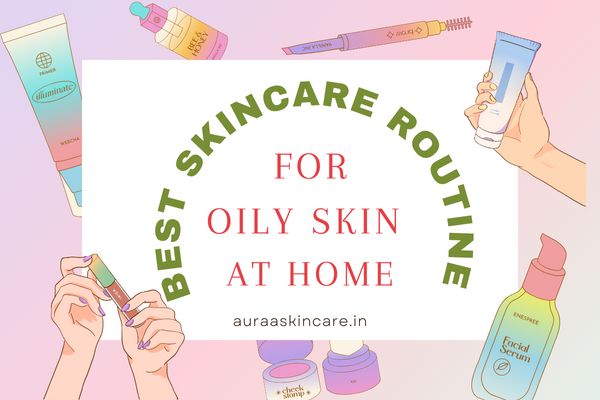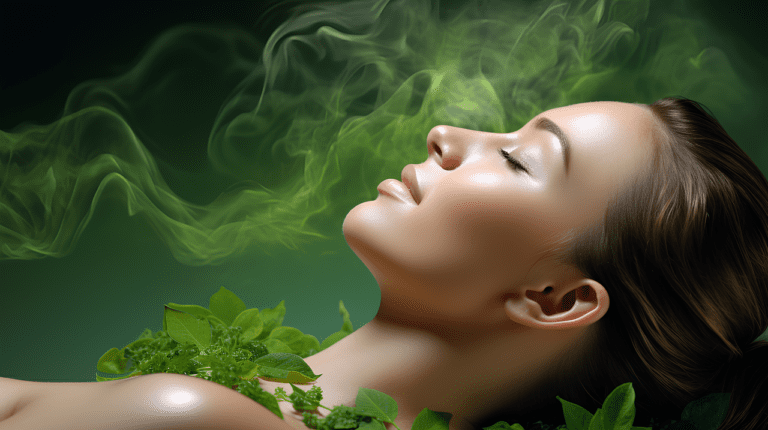Table of Contents
ToggleIntroduction to the Best Skincare Routine for Oily Skin at Home
Oily skin can be a challenge, but with the right skincare routine, you can keep excess shine at bay and enjoy a healthy complexion year-round. In this comprehensive guide, we will explore various aspects of managing oily skin, from lifestyle tips to seasonal adjustments, all while keeping “skincare routine for oily skin” in focus
Lifestyle Tips for Managing Oily Skin
Living with oily skin starts with making a few lifestyle changes:
- Gentle Cleansing: Start your day with a mild, foaming cleanser that contains salicylic acid or glycolic acid. This helps to remove excess oil without over-drying your skin.
- Regular Washing: Wash your face twice daily. This helps in controlling oil build-up and preventing breakouts.
- Avoid Touching Your Face: Hands often carry dirt and oil. Resist touching your face, and use a clean cloth or tissue when necessary.
- Non-Comedogenic Products: Look for non-comedogenic makeup and skincare products that won’t clog your pores.
- Stay Hydrated: Drinking ample water is essential for healthy skin. Dehydration can lead to the overproduction of oil.
- Balanced Diet: Avoid excessive consumption of fried or greasy foods, which can exacerbate oiliness.
- Stress Management: Stress can worsen skin conditions. Here’s how to manage it: Stress Reduction Techniques: Incorporate stress-reduction techniques into your daily routine, such as yoga, meditation, or deep breathing exercises. Adequate Sleep: Ensure you get enough sleep. A good night’s rest helps your skin regenerate
A Sample Oily Skin Care Routine
Maintaining healthy, radiant skin starts with a well-structured skincare routine. Here’s a sample daily regimen for oily skin
Morning Routine:
- Cleanser: Begin your day by cleansing your face with a gentle, oil-free cleanser to remove excess oil and impurities.
- Toner: To maintain PH of your skin, apply a mild and alcohol-free toner
- Serum: Use a lightweight, non-comedogenic serum with ingredients like salicylic acid or niacinamide to control oil production.
- Moisturizer: Opt for an oil-free, hydrating moisturizer.
- Sunscreen: Finish with broad-spectrum sunscreen to protect your skin from UV damage.
Evening Routine:
- Double Cleanse: Start with an oil-based cleanser to remove makeup and sunscreen, followed by a gentle foaming cleanser.
- Exfoliation: Use a chemical exfoliant (2-3 times a week) to unclog pores and reduce sebum production.
- Serum: Apply the same serum as in the morning routine.
- Night Cream: Choose a non-greasy night cream to keep your skin hydrated.
Excess oil production can lead to clogged pores, acne, and a persistent shiny appearance. However, with the right skincare routine tailored to your skin type, you can manage and even balance the excess oil.
DIY Skincare Remedies for Oily Skin:
Here, we’ll explore two essential aspects of a skincare routine for oily skin: DIY Skincare Remedies and Natural Ingredients to Tackle Oily Skin.
DIY Skincare Remedies for Oily Skin
- Clay Masks for Oil Absorption: Clay masks, like bentonite or kaolin, are fantastic for oily skin. They work by absorbing excess oil and impurities from the skin’s surface. Applying a clay mask once a week can help control oil production and keep your skin fresh and clean.
- Homemade Toner with Witch Hazel: Witch hazel is a natural astringent that can help tighten your pores and reduce oiliness. To make your own toner, mix witch hazel with water and apply it to your face using a cotton ball after cleansing.
- DIY Oil-Control Face Scrub: Create a gentle face scrub using ingredients like oats, yogurt, and honey. This scrub exfoliates the skin, removes excess oil, and leaves your face feeling soft and smooth.
- Aloe Vera Gel for Hydration: While it might seem counterintuitive, oily skin can still benefit from hydration. Aloe vera gel provides moisture without clogging pores. Apply a thin layer to your skin after cleansing and toning.
- Apple Cider Vinegar as a Natural Toner: Apple cider vinegar has antibacterial properties and can help regulate the skin’s pH balance. Mix it with water (diluted) and use it as a toner to control oil and prevent breakouts.
- Green Tea Ice Cubes: The antioxidants in green tea can calm inflammation and reduce oiliness.
Natural Ingredients to Tackle Oily Skin
- Tea Tree Oil: Known for its antibacterial properties, tea tree oil can help combat acne and control excess oil. Use it sparingly by diluting a few drops with a carrier oil and applying it to blemishes.
- Lemon Juice: Lemon juice is a natural astringent and contains citric acid, which can reduce oiliness. Mix it with water and use it as a toner, but be cautious as it can be drying, so don’t overdo it.
- Honey: Honey is a gentle yet effective natural humectant. It helps retain moisture while preventing excess oil. Create a honey mask or use it as a cleanser for a glowing complexion.
- Cucumber: Cucumber slices or cucumber-infused water can have a cooling and soothing effect on the skin. They help reduce inflammation and control oil production.
- Oatmeal: It absorbs excess oil and soothes irritated skin. Mix it with water or yogurt to create a calming face mask. Incorporating these DIY remedies and natural ingredients into your skincare routine for oily skin can help you achieve a balanced and healthy complexion. Remember that consistency is key, and always patch-test new ingredients to ensure they work well with your skin.
Oily Skin-Friendly Makeup Tips
Achieving a flawless makeup look with oily skin can be a challenge, but these tips can help:
- Primer: Begin with a mattifying primer to create a smooth canvas for makeup and control oil.
- Foundation: Use oil-free or matte foundations for a shine-free finish.
- Blotting Paper: Keep blotting papers handy to touch up throughout the day.
- Powder: Set your makeup with a translucent setting powder to reduce shine.
- 5. Blush and Bronzer: Opt for powder-based blush and bronzer products.
- Setting Spray: Finish with a setting spray to lock in your makeup and control oil.
Makeup Products for Oily Skin:
When selecting makeup products for oily skin, look for those labeled “oil-free,” “matte,” or “long-lasting.” Some trusted brands offer a wide range of suitable products, including foundations, powders, and eyeshadows.
Setting Techniques
Proper makeup setting is key for controlling oily skin. Try these techniques:
- Baking: Apply setting powder generously over your makeup, leave it for a few minutes, then brush off the excess.
- Layering: refers to the process of adding layers one on top of another, usually to achieve a desired effect or outcome. Apply thin layers of makeup, allowing each layer to set before adding more.
- Blotting: Use blotting papers to absorb excess oil without disturbing your makeup.
In conclusion, managing oily skin involves a consistent skincare routine and choosing makeup products designed for your skin type. With the right techniques and products, you can enjoy a fresh and radiant complexion, free from excess shine and clogged pores. Stick to your routine, and you’ll be on your way to healthier, happier skin.
Skincare for Oily Skin in Different Seasons
Oily skin may behave differently in various seasons:
Summer Skincare: In summer, opt for lightweight, oil-free products. Sunscreen is crucial, so choose a non-comedogenic sunscreen with at least SPF 30.
Winter Skincare: In winter, focus on hydration. Use a gentle, hydrating cleanser and a moisturizer suitable for oily skin.
Adapting Your Routine Year-Round
Consistency: Regardless of the season, consistency is key. Stick to your daily routine, with slight modifications as needed.
Professional Guidance: Consult a dermatologist for personalized advice and product and recommendations.
Conclusion
Managing oily skin involves a holistic approach, from lifestyle choices to skincare adjustments across the seasons. By following a consistent “skincare routine for oily skin,” you can maintain a healthy, radiant complexion and keep excess oil in check. Remember, the key is to embrace your skin and adapt your routine to its unique needs.
- RELATED ARTICLES:
- Knowing When to Consult a Professional



Pingback: The 8 Most Effective Skincare Treatments You Can Do at Home.